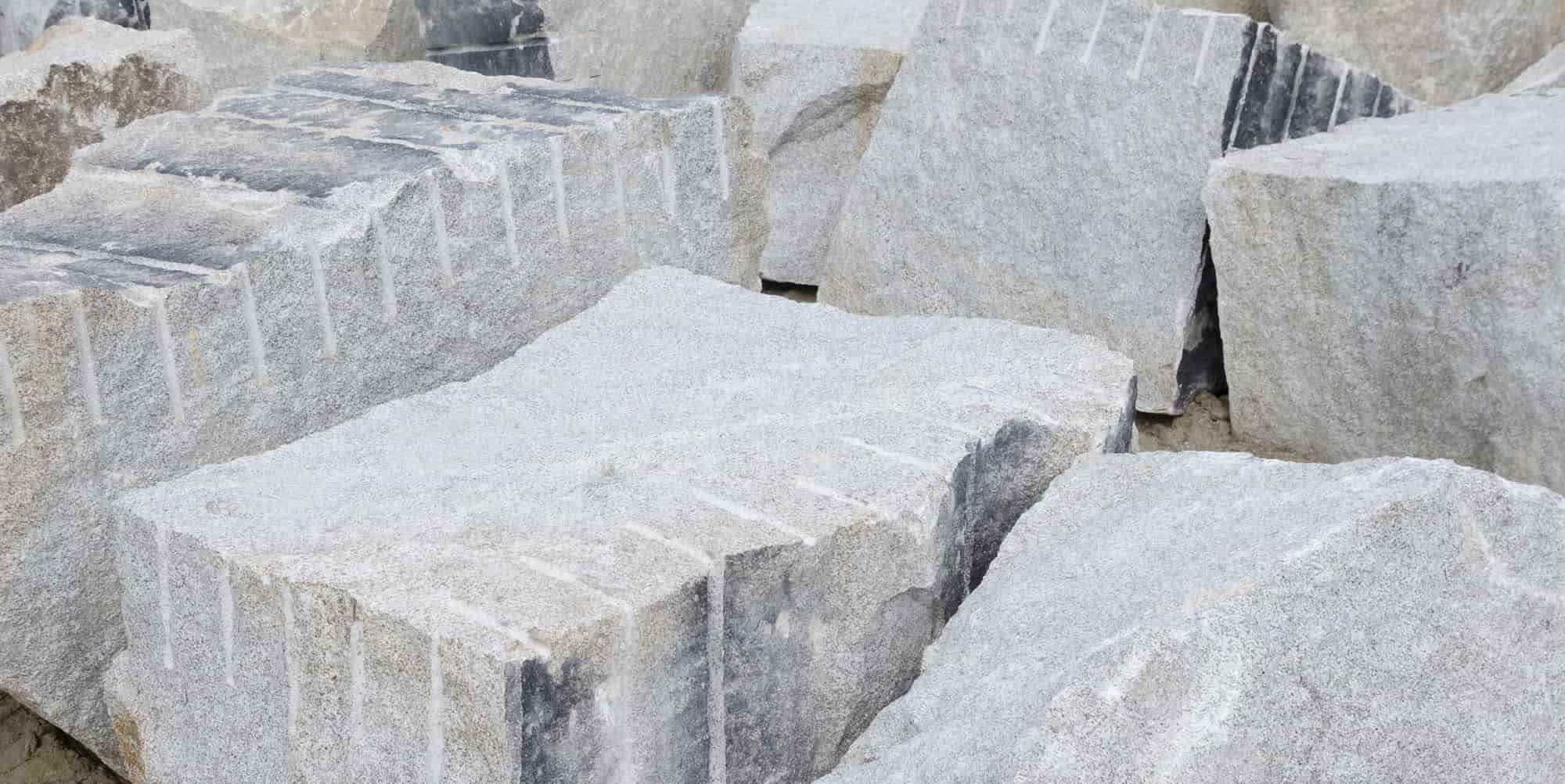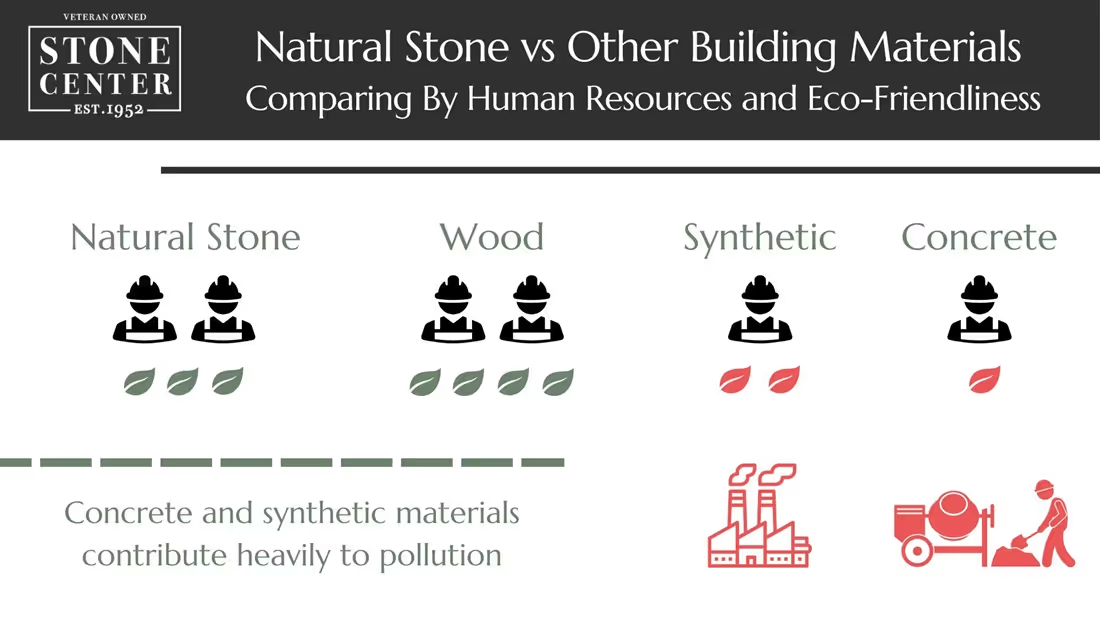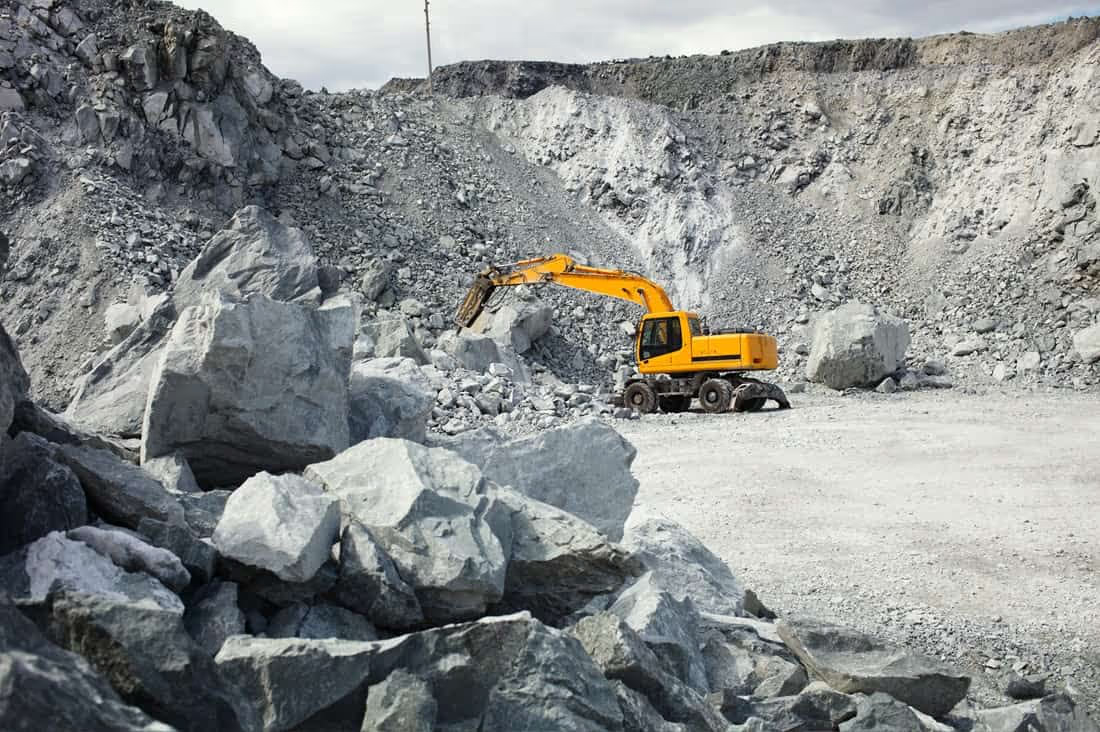- Stone Center
- Blog
Is Natural Stone Sustainable?
23/7/2025
7/11/2024
Is Natural Stone Sustainable?

Sustainability is the name of the game these days, and the construction world is no exception. While new eco-friendly materials are popping up everywhere, natural stone – a classic for ages – is making a comeback. But hold on, is natural stone sustainable for modern buildings? Let's find out!
Natural Stone: What's the Deal?
Natural stone is, quite simply, a gift from the Earth. Common types of natural stone include granite, marble, limestone, sandstone, slate, and travertine, each boasting unique textures, colors, and patterns. Its strength, durability, and sheer aesthetic appeal are undeniable.
Building for a Better Tomorrow: The Sustainability Imperative
The construction industry is undergoing a green revolution, and for good reason. Sustainable building materials are the cornerstone of a brighter future, reducing pollution, conserving precious resources, and creating spaces that nurture both people and the planet.
Environmental Impact of Natural Stone

To truly gauge the sustainability of natural stone, we must consider its lifecycle, from the moment it's extracted from the earth to its final resting place in our homes and cities.
- Extraction and Quarrying Processes: The extraction process, known as quarrying, has long been a source of environmental concern. However, modern quarrying techniques have evolved significantly, minimizing disruption to local ecosystems and prioritizing land restoration.
- Energy Consumption in Stone Processing: Transforming raw stone into the polished slabs and intricate tiles we admire requires energy. Thankfully, advancements in technology have made this process far more efficient, reducing the overall energy consumption associated with stone production.
- Transportation and Its Effects: Transportation of heavy natural stone from quarries to construction sites contributes to greenhouse gas emissions. Choosing locally sourced stone can mitigate these effects by reducing transportation distances and supporting local economies.
Sustainable Practices in the Natural Stone Industry
Transporting heavy stone over long distances undeniably contributes to carbon emissions. Yet, by opting for locally sourced stone, we can significantly reduce the transportation footprint and support local economies.
Advances in Quarrying Techniques
Cutting-edge methods like diamond wire sawing have revolutionized the quarrying process, making it more precise, less wasteful, and ultimately, more eco-friendly.
Reducing Waste During Production
The industry is finding ingenious ways to repurpose stone remnants and byproducts, transforming them into valuable resources for landscaping, road construction, and other applications.
Utilization of Recycled Stone
Embracing the circular economy, the use of recycled stone from demolished buildings or surplus quarry material is gaining traction. This not only reduces waste but also lessens the demand for new stone extraction.
Comparison with Other Building Materials

Evaluating the sustainability of natural stone involves comparing it with other common building materials.
Natural Stone vs. Concrete
Concrete is undeniably versatile, but its production leaves a hefty carbon footprint. Natural stone, on the other hand, boasts a significantly longer lifespan and requires minimal upkeep, making it a greener choice in the long run.
Natural Stone vs. Wood
While wood is a renewable resource and can be eco-friendly when sourced responsibly, deforestation and the use of chemical treatments raise concerns about its sustainability. Natural stone, requiring no chemical intervention, offers superior durability and a longer lifespan, ultimately reducing waste and resource consumption.
Natural Stone vs. Synthetic Materials
Engineered stone and other synthetic materials such as engineered stone often rely on resins and chemicals that can harm the environment. Natural stone, in its purest form, sidesteps these issues and can be fully recycled at the end of its life, contributing to a circular economy.
Benefits of Using Natural Stone
The benefits of using natural stone extend far beyond its undeniable beauty.
Durability and Longevity
Natural stone is renowned for its durability and longevity, often lasting for generations with proper care. This inherent longevity minimizes the need for replacements, conserving resources and reducing waste.
Low Maintenance Requirements
Unlike many other materials, natural stone requires minimal maintenance. A simple cleaning with mild soap and water is usually all it takes to keep it looking its best, reducing the need for harsh chemicals.
Aesthetic Appeal and Versatility
With its rich array of colors, patterns, and textures, natural stone offers unparalleled design versatility. It effortlessly complements any architectural style, enhancing both interior and exterior spaces.
Certifications and Standards
Several certifications and standards verify the sustainability of natural stone.
- Natural Stone Council Guidelines: The Natural Stone Council establishes guidelines and best practices for responsible stone quarrying and processing, promoting environmentally conscious operations.
- LEED Certification and Natural Stone: Natural stone can contribute to LEED (Leadership in Energy and Environmental Design) certification points in green building projects, promoting sustainable design and construction practices.
- Living Building Challenge: The Living Building Challenge sets rigorous sustainability standards, and natural stone can meet these criteria when sourced and processed responsibly.
Economic and Social Impacts

The use of natural stone also has positive economic and social impacts.
- Boosting Local Economies: Sourcing natural stone locally supports local economies by providing jobs and stimulating economic activity in quarrying regions.
- Employment Opportunities in Quarrying Regions: The natural stone industry creates employment opportunities in quarrying and processing, supporting livelihoods and communities.
- Socially Responsible Sourcing: Socially responsible sourcing practices ensure that natural stone is extracted and processed in ways that respect workers' rights and promote fair labor practices.
Conclusion
We're not just another stone supplier – we're your neighbors. Stone Center has been a leading stone fabricator and supplier in Ohio since 1952, with deep roots in Cincinnati and Columbus. Our commitment to quality and service has led us to expand our reach to surrounding states, including Pennsylvania, Indiana, West Virginia, Kentucky, Michigan, Tennessee, Illinois, and many other states to meet the growing demand for top-notch stone products.
Whether you're starting a brand-new construction project or giving your home a fresh look, our wide selection of beautiful and sustainable natural stone can help you bring your vision to life. And remember, when you choose Stone Center, you're not just choosing great stone – you're also supporting your community and making a positive impact on the planet.
Get in touch with us today at (513) 271-5646 or request a quote online to discover the perfect natural stone for your project.
FAQ
How does natural stone compare to other materials in terms of sustainability?
Natural stone is a clear winner in the sustainability game. Its exceptional durability, minimal maintenance needs, and ability to be fully recycled make it a far greener choice than many synthetic or concrete materials.
Are there any certifications that verify the sustainability of natural stone?
Yes, there are! Reputable organizations like the Natural Stone Council and LEED offer certifications that confirm the stone was produced using responsible environmental and social practices.
What are the most environmentally friendly types of natural stone?
Abundant and long-lasting stones like granite and limestone are often considered the most eco-friendly choices. Thanks to their long lifespan and minimal maintenance needs, they leave a smaller environmental footprint.
Can recycled stone be used in new construction projects?
Absolutely! Recycled stone is a fantastic way to reduce the demand for new quarrying and minimize waste. It's a beautiful and eco-conscious choice for any project, whether it's new construction or a renovation.
How can consumers ensure they are buying sustainably sourced natural stone?
It's easy – simply look for certifications from trusted organizations and have a conversation with your supplier. Ask about their quarrying and processing practices to ensure they align with your commitment to sustainability. We at Stone Center are always happy to answer your questions and guide you toward the most sustainable choices.
.avif)
Jon, the owner of Stone Center, is a knowledgeable expert in natural stone products, specializing in various types of stone for landscaping and architectural projects. Passionate about promoting the beauty and versatility of natural stone, Jon aims to use these blogs to inspire readers with creative ideas to upgrade their homes.
How much does it cost to get a stone restored?
How much you end up spending to restore stone varies on the type of stone, the technique, and the stone’s current condition. Stone in good condition will cost less to restore, whereas stone that has a lot of wear and tear may require a longer restoration.







%20(1).avif)
%20(1).avif)
%20(1).avif)
